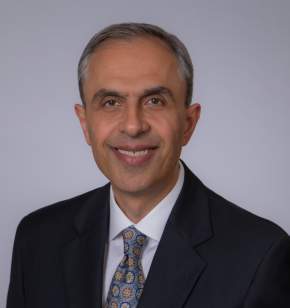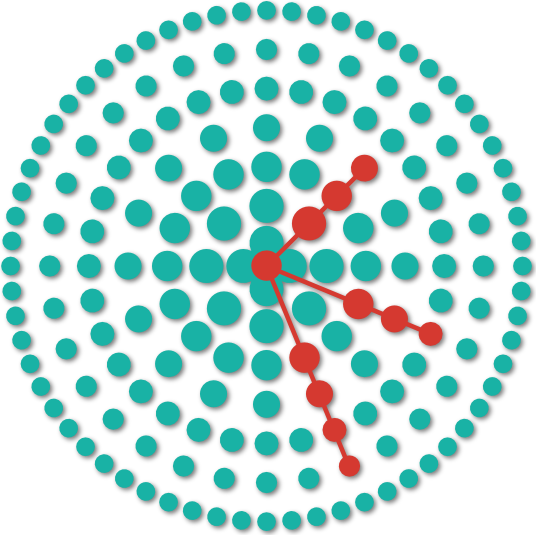Surviving with a Brain Aneurysm


Surviving with a brain aneurysm can range from being manageable to profoundly challenging. For some, the condition may lurk silently, remaining undetected for years, while for others, it manifests with debilitating symptoms or even life-threatening rupture.
Fortunately, most brain aneurysms are not fatal, and patients can survive and even thrive with proper treatment and management. Here is a comprehensive overview of what living with a brain aneurysm or surviving a ruptured one entails.
Recovery Outlook for Patients with Ruptured Brain Aneurysms
Rupture is one of the most serious potential complications of an aneurysm. The recovery outlook for patients with a ruptured brain aneurysm depends on the location and size of the aneurysm, treatment modality, as well as the patient’s general health. Approximately 30,000 Americans experience a brain aneurysm rupture every year.
A ruptured brain aneurysm is essentially a tear in a blood vessel in the brain. This causes significant bleeding into the surrounding subarachnoid space, leading to a hemorrhagic stroke. A ruptured brain aneurysm can cause several severe symptoms, including:
- Severe headache
- Nausea and vomiting
- Seizure
- Confusion
- Loss of consciousness
- Behavioral change
- Stiff neck
- Vision impairment
- A drooping eyelid
- Sensitivity to light
These symptoms can be overwhelming, especially if the patient experiences seizures. It is important to seek medical help as soon as the symptoms occur — timely treatment to control the bleeding and prevent further bleeding can limit damage to the brain, reducing the likelihood of permanent disability or death.
Surviving the First 24 Hours
The first 24 hours after a brain aneurysm rupture will be crucial to overall survival and long-term prognosis. When an aneurysm ruptures, bleeding into the surrounding space can cause a sudden and severe headache, often described as "the worst headache of my life". This can be accompanied with other symptoms such as nausea, confusion, vision changes, and loss of consciousness.
Emergency medical services are usually activated immediately upon recognition of this symptoms. The patient is then rushed to the hospital, typically to the emergency department or a neurosurgical intensive care unit (ICU), for prompt evaluation and treatment. Diagnostic imaging tests, such as a CT scan or angiogram, are performed to confirm the presence of bleeding in the brain and identify the location and extent of rupture.
Medications may be administered to control blood pressure, manage pain, and ensure adequate oxygenation and hydration. A neurosurgeon may be consulted to discuss treatment options. This may include surgical clipping or endovascular coiling to repair the ruptured aneurysm and prevent re-bleeding.
Throughout this period, patients will undergo continuous monitoring for any deterioration in neurological function, which may manifest as decreased consciousness, changes in pupil size, or focal neurological deficits. Vital signs, including blood pressure, heart rate, and oxygen saturation, are closely and regularly monitored to ensure timely intervention if necessary.
For family members and loved ones present, the sight of numerous wires, tubes, and medical equipment, along with the flurry of activities in the hospital setting, can be overwhelming and emotionally challenging. It may be necessary to wait outside of the room until advised by the medical team.
Despite swift and coordinated medical intervention, nearly a quarter of patients do not survive in the first 24 hours after a brain aneurysm rupture. Although your local hospital may be able to evaluate you and diagnose the rupture, transfer to a medical center that specializes in stroke and other vascular disorders may be required for the best outcome.
Why should you have your surgery with Dr. Cohen?
Dr. Cohen
- 7,500+ specialized surgeries performed by your chosen surgeon
- More personalized care
- Extensive experience = higher success rate and quicker recovery times
Major Health Centers
- No control over choosing the surgeon caring for you
- One-size-fits-all care
- Less specialization
For more reasons, please click here.
Common Complications
Patients who have had a ruptured brain aneurysm may experience many health complications. Rebleeding (the aneurysm bleeding again) is dangerous and usually causes similar symptoms as the original aneurysm rupture. Rebleeding may be fatal.
When a brain aneurysm ruptures, the blood leaks into the surrounding space and can irritate the muscle in the walls of the other arteries of the brain. This can lead to vasospasm, a condition in which the diameter of the artery narrows.
The narrowing of the artery inhibits blood flow, and can cause an ischemic stroke. Ischemic strokes can produce weakness of the arms and legs, difficulty speaking, behavioral changes, unconsciousness, and potentially be fatal.
To prevent vasospasm, patients with ruptured aneurysms will typically be given a medication called nimodipine. Nimodipine belongs to a class of drugs called calcium channel blockers, which help relax the blood vessels and improve blood flow to the brain.
Since vasospasm can occur weeks after rupture, patients may need to stay in the hospital for a prolonged length of time. Even if they feel like they are better, continued close monitoring may be necessary to prevent this potentially debilitating complication.
Solutions for Ruptured Brain Aneurysms
Fortunately, ruptured brain aneurysms are treatable and manageable. There are two primary treatment options:
- Surgical treatment: Surgical clipping involves sealing the aneurysm neck, its connection to the blood vessel, using a special metal clip. The procedure involves open surgery whereby the surgeon makes an incision on the scalp and drills through the skull to reach the ruptured aneurysm for repair. Sometimes, a bypass operation may be required, where blood is completely diverted away from the aneurysm. This is done only in very complex aneurysms.
- Endovascular treatment: Endovascular coiling uses a catheter and wire to clog the ruptured aneurysm with miniature coils made of platinum. The surgeon inserts a catheter and wire through a blood vessel in the arm or leg and moves them up towards the affected blood vessel in the brain. This approach is less invasive than open clipping but may be less durable, requiring the procedure to be repeated. Newer endovascular technologies have been developed, such as flow-diverting stents and WEB devices, to treat more complex aneurysms.
Life After Treatment
Life after treatment can vary significantly different depending on the initial status of the aneurysm. For those undergoing elective treatment on an intact brain aneurysm, resuming normal activities is often achievable following a brief hospital stay. Conversely, individuals treated after an aneurysm rupture may be hospitalized for an extended period lasting several weeks to monitor for potential complications such as vasospasm.
The aftermath of aneurysm rupture, including potential stroke, may result in notable neurological deficits requiring specialized medical attention unavailable at home. Rehabilitation services will also play a pivotal role in optimizing recovery post-rupture. The coordination of these services, coupled with the gradual nature of the patient's functional recovery, will require time and patience.
Extended hospital stays can be challenging and frustrating for both patients and loved ones. Continuous medical surveillance necessitates frequent interruptions, with patients often awakened by repeated exams, blood draws, beeping monitors, and the bustling activity in the corridors. This can be disorienting and stressful.
Communicate with your medical team to see if any accommodations can be made for your comfort, such as closing the door to your room during the day to minimize the noise. Making your preferences known in a respectful manner can go a long way in improving your stay at the hospital.
Upon discharge from the hospital, patients may go to various destinations depending on the complexity of their medical needs, the extent of their recovery, and the availability of resources. Home, rehabilitation facility, skilled nursing facility, or a long-term care facility are several options that will be considered during discharge planning.
Living With a Brain Aneurysm
Living with a brain aneurysm can be a complex and varied experience, influenced by factors such as the size and location of the aneurysm, whether it has ruptured or remains intact, the individual's overall health, and their access to medical care and support services.
While most individuals do not experience symptoms, larger aneurysms or those that press against sensitive nerves or brain tissues can cause various symptoms, including vision impairment, dilated pupils, a drooping eyelid. These symptoms can be subtle or more severe, prompting imaging tests that lead to its diagnosis.
When an aneurysm is discovered, it can bring about feelings of uncertainty and anxiety. The thought of rupture and potential life-threatening consequences may impact your daily life and decision-making. It will be important to engage in a comprehensive discussion weighing the risks and benefits of treatment with a neurosurgeon.
If treatment is advised, the surgeon will discuss the different treatment modalities and any potential risks. However, some brain aneurysms, particularly those that are small and do not cause symptoms, may not need treatment. In such scenarios, your doctor may recommend observation and regular imaging tests.
During this observation period, it's crucial for you to manage any concurrent medical conditions, such as high blood pressure and high cholesterol, and cease smoking. Uncontrolled blood pressure, elevated cholesterol levels, and exposure to tobacco smoke can all exacerbate the weakening of blood vessel walls, potentially heightening the risk of aneurysm formation and rupture.
Additionally, adopting lifestyle modifications such as maintaining a healthy diet, engaging in regular exercise, and minimizing stress levels may be advised to further support vascular health.
Key Takeaways
- Living with an intact brain aneurysm can be stressful, but many individuals can resume their normal lives before and after treatment.
- Life after a ruptured aneurysm can be significantly challenging depending on the extent of neurological deficits sustained after the event.
- While most patients survive the first 24 hours after aneurysm rupture, nearly a quarter of patients do not.
- Survivors usually require continuous medical observation, lifestyle changes, and medical treatment.











